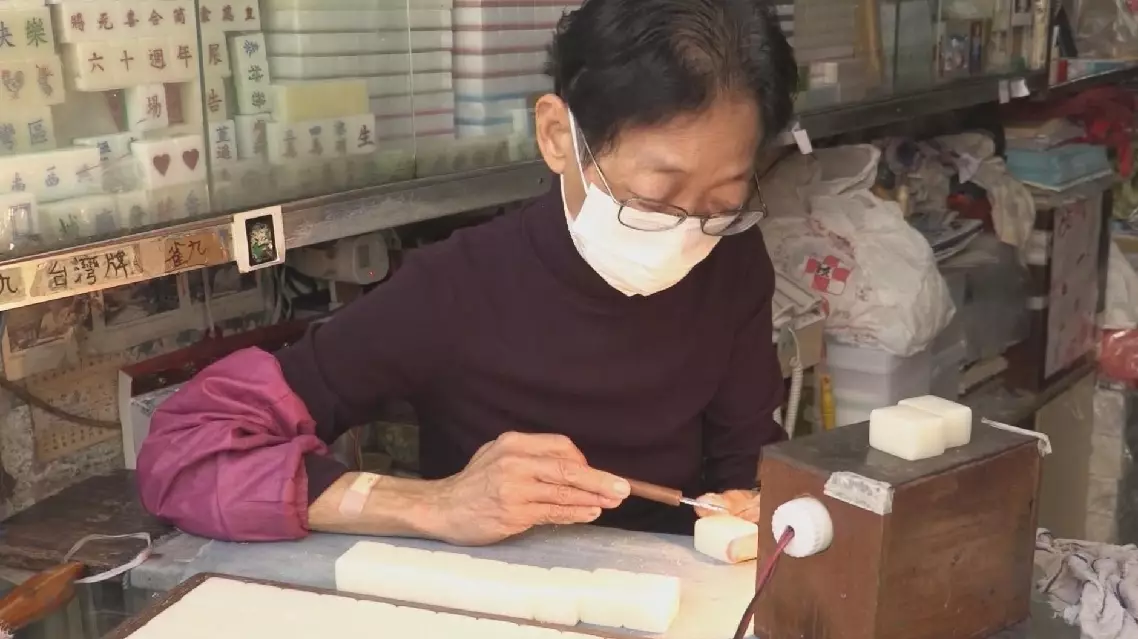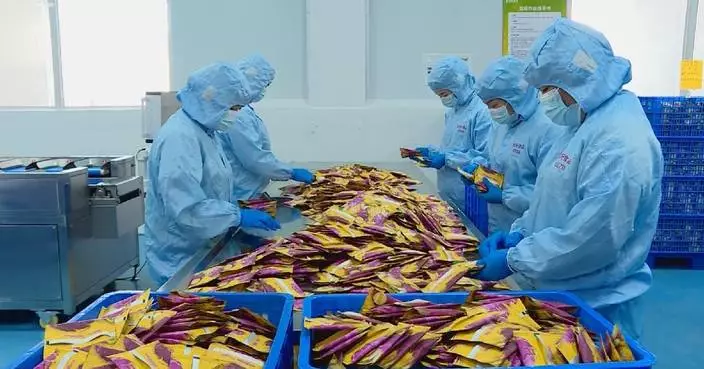The crew of China's Shenzhou-19 spacecraft held a handover ceremony with the Shenzhou-20 crew and transferred the keys of the country's space station to the latter on Sunday.
"This key symbolizes not only the handover between our two crew groups, but also a heavy mission and responsibility. Now, I'm handing the key into your hands, and you will be responsible for managing, caring for, and maintaining the space station," said Cai Xuzhe, commander of the Shenzhou-19 crew, with the other two members being Song Lingdong and Wang Haoze.
Chen Dong, commander of the Shenzhou-20 crew, thanked the Shenzhou-19 trio for their diligent care of the space station.
"Thank you, the Shenzhou-19 crew, for your taking such good care of our space home. During these few days of handover, we have learned a lot of valuable experience and practices. We assure you and our country and the people that we will, just like you, carefully and meticulously complete every task and do our part well," said Chen.
The Shenzhou-20 spacecraft, atop a Long March-2F carrier rocket, blasted off from the Jiuquan Satellite Launch Center in northwest China on Thursday, sending astronauts Chen Dong, Chen Zhongrui and Wang Jie to space. The Shenzhou-19 crew has now completed all the planned tasks. The three astronauts will take the Shenzhou-19 spacecraft and return to the Dongfeng landing site in north China's Inner Mongolia Autonomous Region on April 29, according to the China Manned Space Agency.
At present, final preparations are in full swing across all participating systems and the landing site is in readiness to welcome the trio back.

China's Shenzhou-19 astronauts complete handover, returning to Earth on Tuesday

China's Shenzhou-19 astronauts complete handover, returning to Earth on Tuesday

China's Shenzhou-19 astronauts complete handover, returning to Earth on Tuesday
Hand-carved Mahjong tiles are becoming a dying art in Hong Kong, as machine-made ones are replacing the handcrafts with lower prices, and the last inheritors of the skill are mostly in their old ages.
Mahjong, a tile game that derived in the late Qing Dynasty (1644-1911) and that has captivated China for more than a century, has been a sweet memory of family and friends' gatherings for many Chinese people.
Ho Sau-Mei, one of the last three Mahjong-tile artisans and the only female carver in Hong Kong, is still dedicated to the skill.
Tucked away in a tiny alcove, Ho have been working in her shop for 40 years since she inherited the business from her father in the 1970s, when the business was still booming.
"I was an apprentice at 13, and became a master at 17. My brothers didn't want to take over, so my father passed it on to me," Ho recalled.
Traditionally, mahjong tiles are hand-carved tiles of jade, bamboo, or animal bones. With cheaper machine-made sets and digital versions of Mahjong games on the rise, the traditional craft no longer prevails. But customers are coming from all over the world for Ho's works, respecting her handmade pieces as artworks that bear a piece of the fading tradition.
"Handmade items are dying out, so to get a part of this for ourselves is something meaningful and something to remember in this trip on," said Joe from the U.S., who paid around 375 U.S. dollars for their set of 144 tiles.
Beyond Ho's craving skills, Mahjong by itself is no longer among the favorite activities of the younger generation. As of now, there are only around 60 mahjong parlors in business in Hong Kong.
The owners of the mahjong parlors are trying hard to hold events to attract the younger generations to know about the traditional game, and shift the old perceptions away from its association with gambling and gang activities that is often featured in Hong Kong films. By now, mahjong has been a formal competitive sport officially recognized by many countries and regions.
"When we learn the mahjong, we can share to others and play together in home. Yeah, maybe it's not for money, but just for fun. It's our culture," said a boy at a mahjong parlor, who just won an on-site competition.
While for Ho, it seems inevitable that the traditional craft of mahjong tile carving will fade away. With no younger craftsmen joining, the craft is entering into its sunset era, but she will carry on working, trying to preserve the unique heritage, Ho said.
"It's tiring, and realistically, it doesn't make money. There's nothing we can do, it could disappear. But as long as I can work, I'll continue," she said.

Traditional craft Mahjong carving in Hong Kong fading away

























































